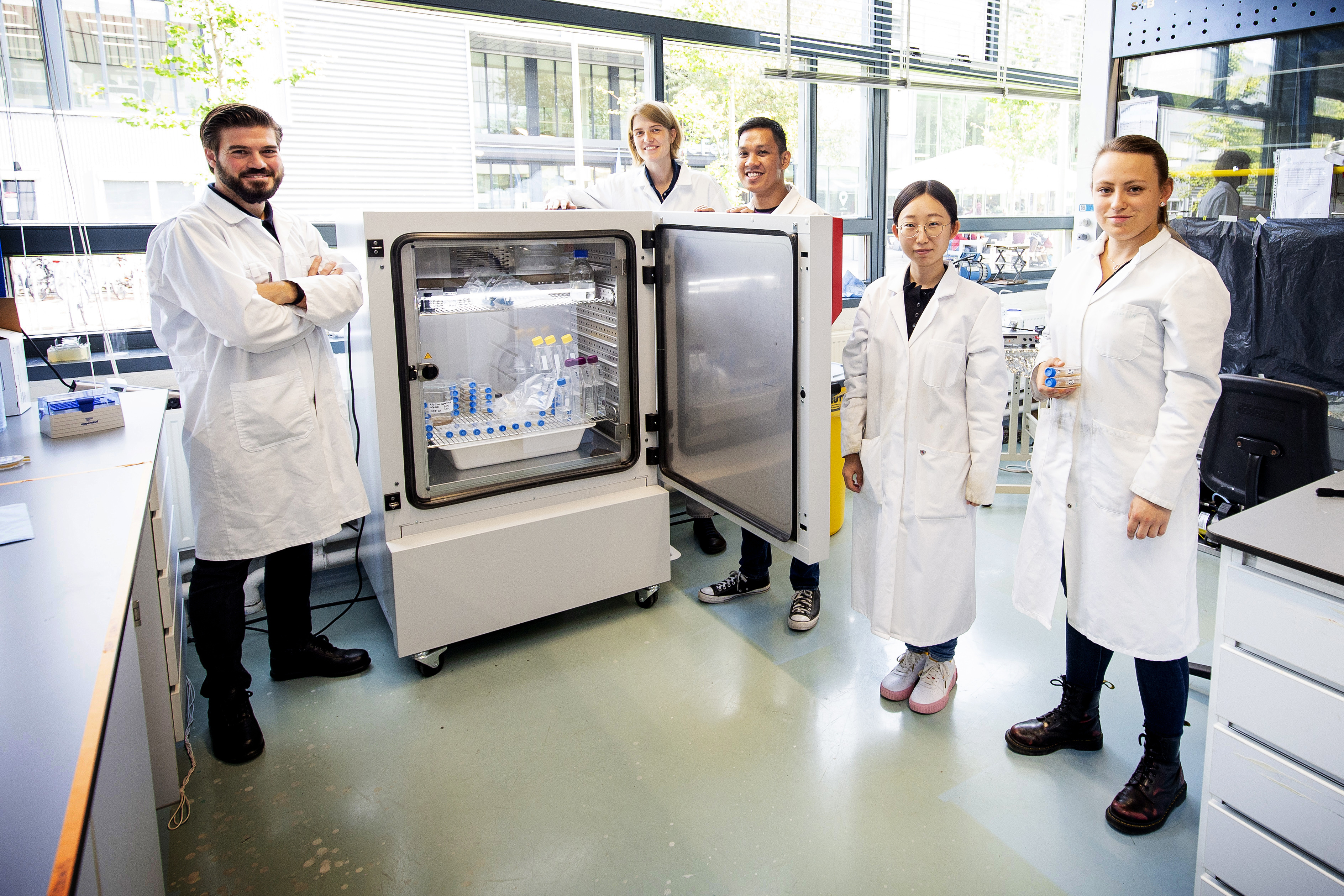New incubator for algae in the Aerospace Engineering laboratory
Dr. Santiago Garcia’s research group at the department of Aerospace Structures and Materials at the Faculty of Aerospace Engineering is currently investigating the potential use of algae as a source to develop environmentally friendly surface treatments and coatings for corrosion protection. To support this research, a new incubator was purchased at the laboratory, partially sponsored by Aerospace Engineering alumni. Read more about the algae study and how the new incubator will contribute to this research below.
The first stages of the algae research were very exciting. Dr. Garcia explains: “The research we are doing with algae and other microorganisms (e.g. fungi) has sparked the interest of academics and industry alike to study the potential that microorganisms may hide for the development of novel surfaces and materials for aircraft and spacecraft.”
In a preliminary work in collaboration with Dr. Corina Brussaard from the NIOZ, the research team explored how different diatom (algae) monocultures grow biofilms on different aerospace relevant materials observing crucial differences. This has been followed by a truly interdisciplinary research, carried out by Sèra Zalman, an MSc student of the Faculty of Aerospace Engineering. In her MSc thesis, Sèra is performing a detailed study to understand the potential effect that local microstructure of aerospace aluminium alloys has on the motility and surface interaction of a selected diatom species. Besides this line of research with living diatoms, PhD candidate, Jingjing Zhao, is studying how to make an efficient use of diatom exoskeletons to protect aircraft against corrosion in the framework of an ongoing research collaboration with Airbus.
In the short term the team is looking forward to the successful MSc thesis defense of Zalman to take place at the beginning of 2022 and to disseminate this very novel interdisciplinary research in academic and industrial forums.
Dr. Garcia reflects on the initial setting up of this research: “The start of this project took us quite some effort as we had to start a totally new research topic and get into scientific domains quite uncommon for material scientists and engineers. This required also the establishment of new collaborations and protocols in our lab but also the strong support from NIOZ and colleagues at TNW (Applied Sciences) to whom we are very thankful. It is a pleasure to see that we established solid and fruitful collaborations that should lead to more breakthrough and exciting interdisciplinary research.”
Now that the starting infrastructure has been established and the first promising scientific results have been obtained, the team aims at consolidating the work and expand the perspectives of this innovative, challenging, and promising research initiated at the faculty through solid collaborations with other academics and industry.
It should be noted that the solid start would not have been possible without some initial investment in basic equipment such as a new incubator, which was partially sponsored by Aerospace Engineering alumni and the Delft University Fund. The incubator allows the research team to grow the algae in their labs which turns out very useful when doing this kind of research where control growth parameters, time and environmental cyclic exposure may have an impact on the algae-surface interactions. An incubator at the very lab where the characterization takes place reduces the risk of disturbing the cultures and allows for more direct parameter-property relationship studies.
Thanks to the support of the alumni that funded the new algae incubator, the start of this novel research line at the interface between materials surface science and biology with a focus on aerospace applications has received a significant boost. Furthermore, by including alumni from the Faculty of Aerospace Engineering, the visibility of this research has been increased in a positive manner.
If you want to know more about this research or do you want to contribute in another way:


